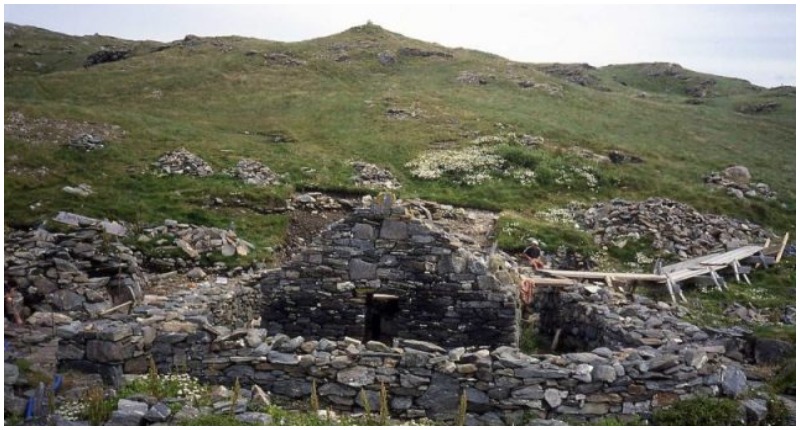A remote island off the west coast of Ireland that was once inhabited by medieval monks is up for sale, according to The Guardian. The uninhabited High Island, located two miles off the Galway coast, is listed for sale at €1.25 million, and is known for its 18th century mine and the remains of a medieval monastery founded in the 7th century.
Medieval Irish monks were notorious for seeking out remote, exposed and wild spots in which to establish their monasteries.
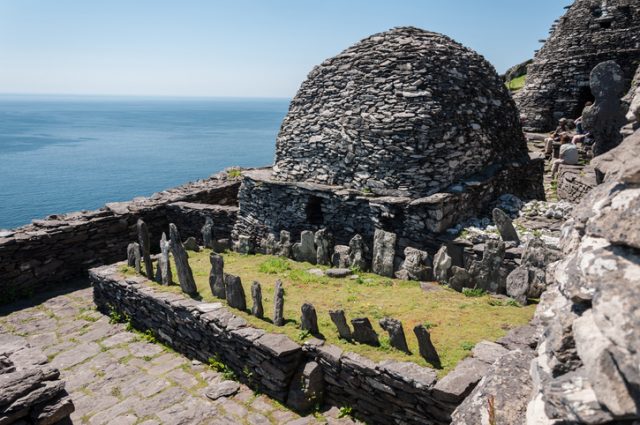
Indeed, early medieval monasteries can be found in some of Ireland’s most isolated and weather-beaten parts of the country, particularly on remote islands off the country’s Atlantic coast.
One of the most famous of these islands is Skellig Michael, made famous as the home of Luke Skywalker in the 2017 movie Star Wars: The Last Jedi. The early medieval monks that landed on Skellig Michael built distinctive ‘beehive’-style, dry stone huts known as chlocháns.
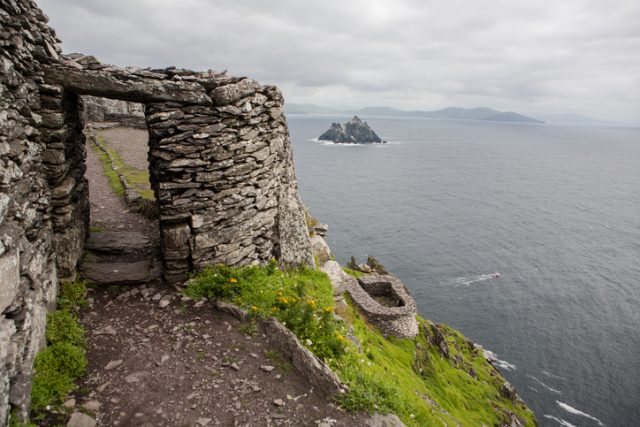
High Island, 200 miles north off the coast of Connemara, might not have the dramatic craggy appearance of the Skellig but is nevertheless a beautiful natural site.
Known as Ardoileán in Irish, it rises approximately 200 feet above sea level and contains two small freshwater lakes. The total size of the island is around 80 acres, corresponding to approximately 60 football fields, according to The Guardian.
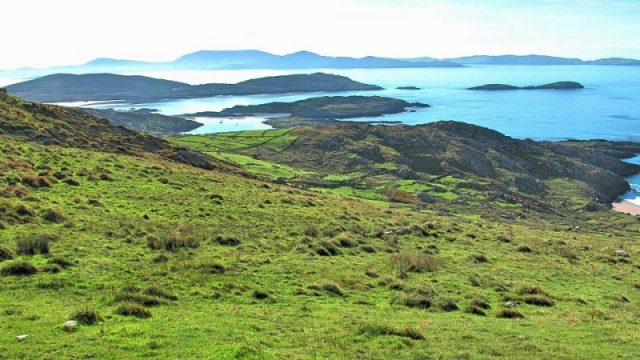
The steep cliffs and gullies that surround the island also provide ample breeding space for a wide variety of bird life, including many species of gulls, barnacle geese, oystercatchers and Arctic terns. Ornithologists are also attracted to the island for the opportunity to spot Manx shearwaters, petrels and even peregrine falcons.
Human settlement on the island is evidenced from the Iron Age, and archaeological findings point to human activity possibly stretching as far back as 1000 BC. However, the principal settlement on the island came in the 7th century, when Saint Féchín of Fore (d. 665) brought a group of men to the island and established a religious community.
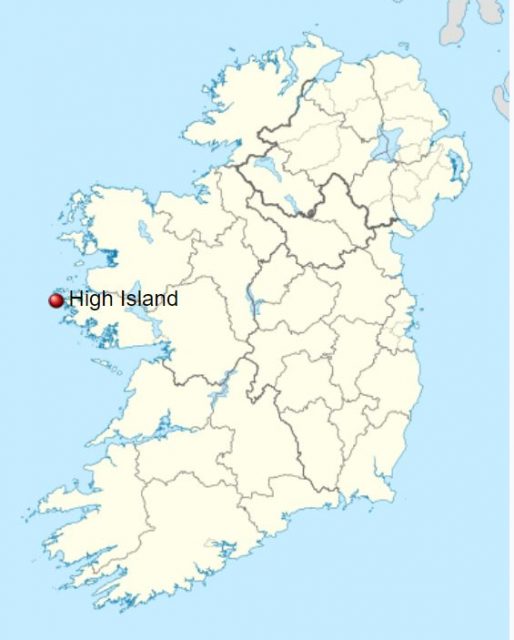
St. Féchín was typical of many other Irish holy men in this period. Born into a noble family with royal lineage, he chose a religious life of contemplation, and sought out remote, austere locations in which to establish his new monasteries.
The settlement on High Island was one of his earliest foundations, but he would go on to establish the much bigger monastery at Fore, in Country Westmeath. These Irish monks lived short, difficult lives as they struggled to eke out an existence in weather-beaten, challenging terrain.
Today, High Island still bears the marks of these dedicated medieval monks. According to The Guardian, it contains the remains of a number of beehive huts, similar to those on Skellig Michael, and a church, altar and graveyard.
Since the Middle Ages, the island has changed hands a number of times. In the 18th century, it was owned by a local family from Galway, who leased it to copper miners, according to The Guardian. The remains of the mine and the stone huts that housed workers may still be seen on the island.
However, in 1969 a poet named Richard Murphy from the neighboring island of Inishbofin bought the island, hoping to use it as a space for reflection, contemplation and inspiration for his work. He also wanted to restore the medieval monastic remains and prevent further destruction of its unique heritage.
However, the wild winds and rain that battered the island, especially in winter, began to take its toll on the poet, and over time he spent less and less time there.
At present, the island offers little shelter for visitors, aside from a small modern building. However, according to The Guardian, auctioneer Luke Spencer noted that this could potentially be extended into a comfortable dwelling, and the new property would enjoy unparalleled 360-degree views of the Atlantic.
Any prospective buyers will need to have their own transport, either by boat or helicopter, as the island is not easy to access. The nature here is wild and untamed, and High Island is a place of great beauty and historical significance.
Despite its harsh climate and exposure to the elements, it’s easy to see why those intrepid 7th century monks chose this place to make their retreat from the world.
